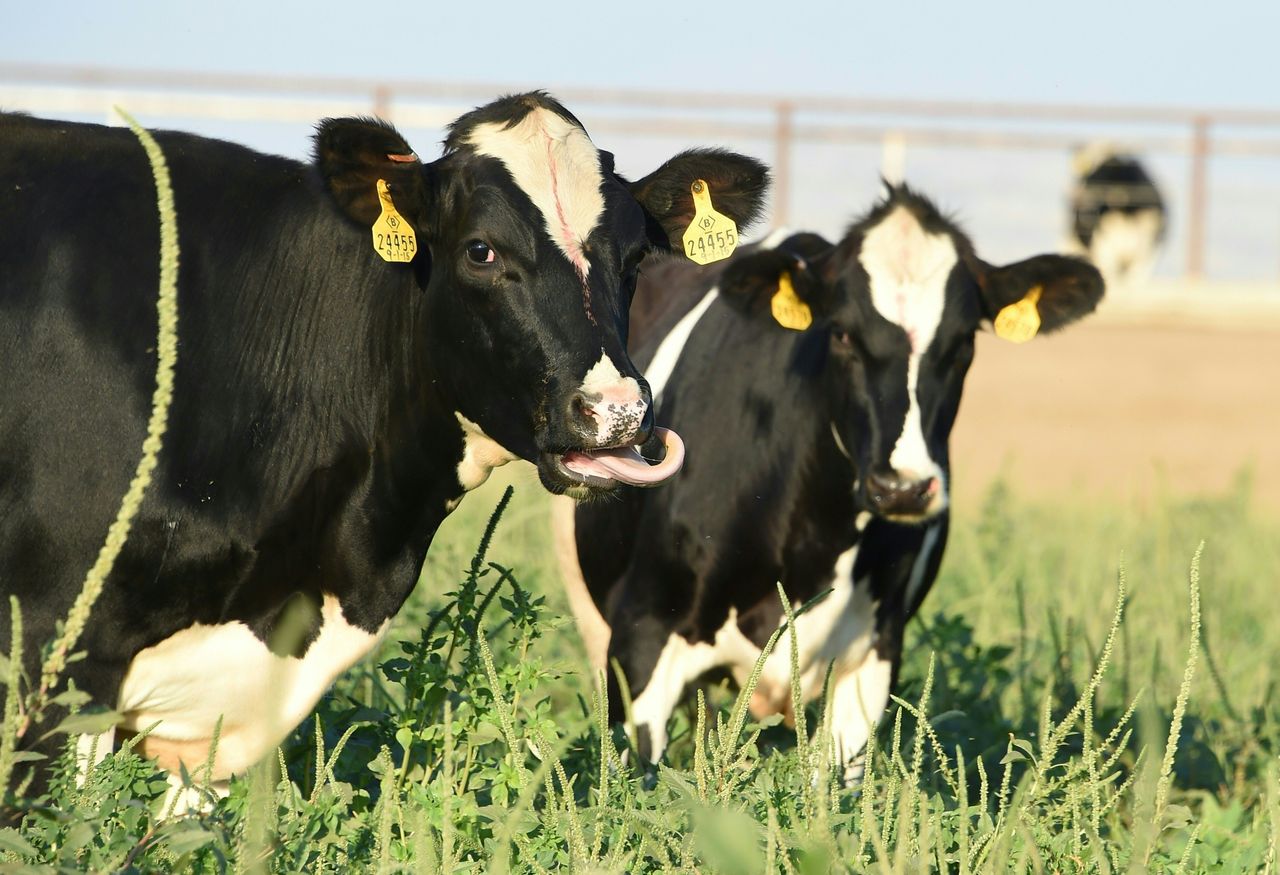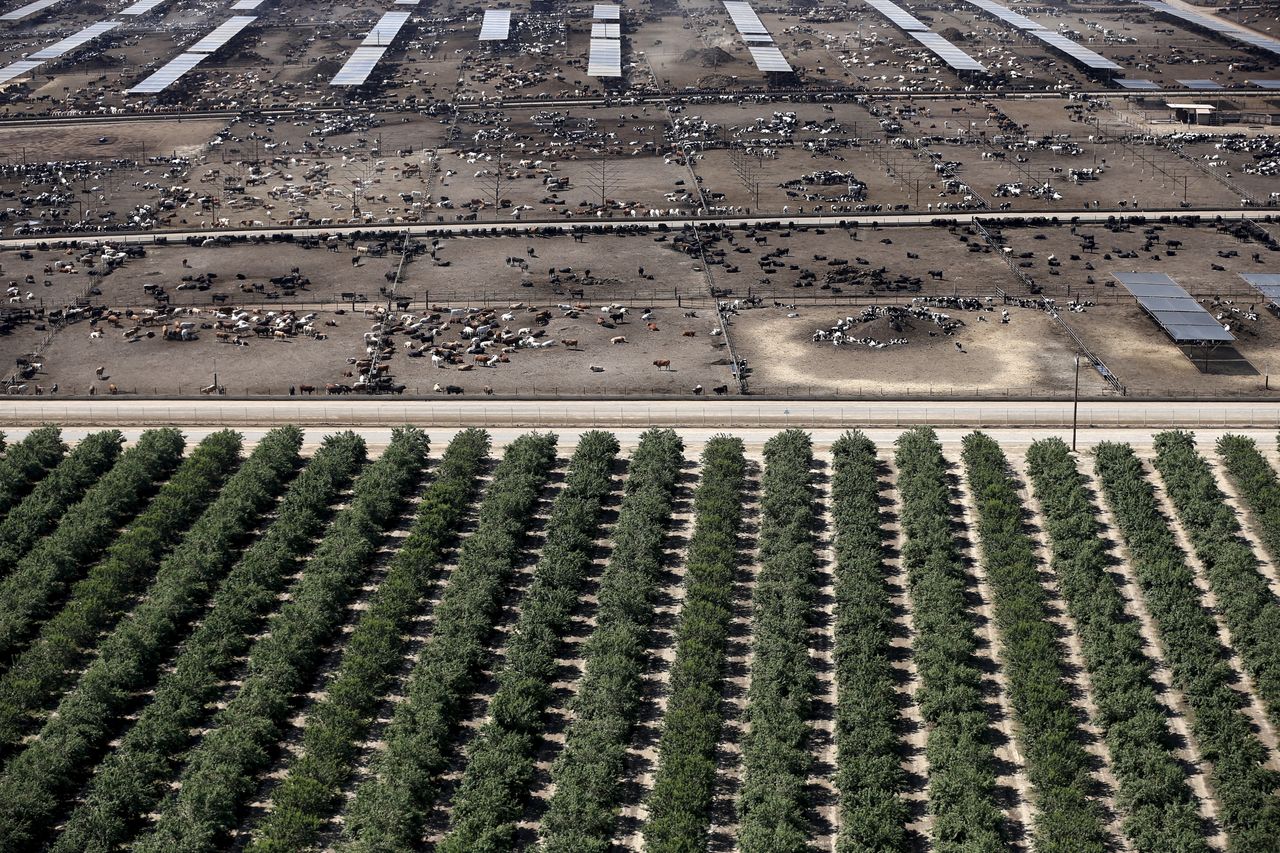Dean, a dairy farmer in Modesto, California, is a rarity. Unlike most milk producers, including his father, he can see himself replacing his entire herd of cows with the supposed villain of the dairy sector: almonds.
Such a move would seem to be in keeping with current consumer trends. More than one-third of American consumers are looking to incorporate more plant-based foods and beverages into their diets. And milk has been one of the products on the front line of this change.
While sales of cow’s milk have fallen by one-third in the U.S. since the 1970s, sales of plant-based alternatives have grown 6 percent since 2012. Worth an estimated $2 billion last year, they now account for around 10 percent of the total milk market. Almond milk is the most popular nondairy alternative, accounting for 64 percent of that market.
Those motivated by environmental reasons to cut out cow’s milk argue they want to reduce the planetary footprint of what they consume. Cows are a major user of land and resources, and are a key source of methane emissions, a potent greenhouse gas.
Yet, when it comes to choosing between cow’s and almond milk, the decision is complicated.
The climate footprint of dairy can vary hugely depending on technology, location and farm management. Some dairy farmers in California are trying hard to improve their sustainability credentials. Take Albert Straus, owner of the Straus Dairy brand, who has installed a methane digester and is generating energy from cow manure.
“I’m trying to create a model that is viable financially, sustainable to the land and humane to animals,” says Straus.

There’s even talk of California dairy farmers adding seaweed to cow feed to help cut methane emissions.
Still, cows remain responsible for 45 percent of methane emissions in California. Almonds, on the other hand, can have a carbon footprint 10 times smaller than dairy milk’s. A clear-cut choice for consumers with an environmental conscience, then?
Not quite. Almond milk has its own downside.
The drive to plant almonds in California has seen production reach record levels this year. The state already produces 80 percent of the world’s almond crop, with production predicted to increase by one-third by 2021. Yet, it has not escaped criticism for its heavy water use during California’s recent drought. Even more so given that 70 percent of California’s almond crop is not even consumed by Americans but exported overseas.
Some commentators, however, say it’s unfair to criticize almond farmers for their water use when the problem is, in fact, a failure to properly price water as well as the failure of other parts of the U.S. and world to match the success of California’s almond production.
We can certainly criticize almond production in the state, wrote Dennis Baldocchi, a professor at the University of California, Berkeley, in a recent Sustainable Food Trust report. But, he argues, the question is, “Can they be grown elsewhere more cheaply and with less water?”
Many would argue it’s also unfair to start pitting almonds and dairy against each other, as they are not direct substitutes. Almond milk contains lower levels of carbohydrates, fats and proteins per unit volume than cow’s milk. But they represent a good illustration of the dilemma people face when looking to buy a green product.
So where does all this leave the ethical consumer? Recent headlines suggest cutting out all meat and dairy is the best thing we could do for the planet. Yet it’s unrealistic to think there will be an immediate wholesale switch away from meat and dairy and, as set out, almonds also have an impact.
Given this reality, eating a sustainable diet should be about making sure that what we eat was sustainably farmed.
To make that happen, what farmers need is better price signals on sustainable farming and governments to get issues like water pricing and air pollution rules right. That way, producers will be forced to adapt and the environment in each region can be sustained.
For Dean in California, that’s already happening, with sustainability regulations increasingly influencing his choice about what to farm. In the past, the wider environmental impacts of food production were not always recognized. The cost of milk and cheese did not account for, say, the water used to grow livestock feed or for methane emissions.
But that is now changing.

For dairy farmers in California, air quality regulations are more costly to comply with and water is more expensive than in other states, say industry groups. California state regulations passed in 2016 require dairy farmers to reduce methane emissions by 40 percent from 2013 levels by 2030.
“The rules add costs,” says Dean. “My father is sticking with dairy, but my brothers are more open. Why are we working so hard for the profitability they ask when we could grow almonds with less effort and more money?”
While California is still the biggest dairy producing state in the U.S., Dean can see that changing soon. “We see acre after acre [of almonds] planted in California. I see a downward trend in milk volume in California,” he says.
Almond farmers face regulations too, with California phasing in restrictions on groundwater withdrawals and calls for a statewide water trading system that puts a price on water reflective of supply and demand.
Of course, when it comes to making ethical food decisions, many consumers are also concerned about animal welfare. But regulators can take the lead on this too. In Sweden, for example, cows are required by law to be grazed outdoors for at least part of the year. The EU has also long banned the use of hormones ― permitted in the U.S. ― to stimulate higher milk yields in dairy cows.
Dean’s dilemma is actually an illustration of the least confrontational way forward for consumers and farmers. If regulators get this right, then there should be no need to demonize foods.
The quest by more consumers to buy more eco-friendly products has raised awareness of the ecological footprint of food production, but not necessarily cut environmental harm. What’s needed is to go back to the farm and make practices as sustainable as possible.
This story has been updated to remove or replace references to a study that was not peer-reviewed.
For more content and to be part of the “This New World” community, follow our Facebook page.
HuffPost’s “This New World” series is funded by Partners for a New Economy and the Kendeda Fund. All content is editorially independent, with no influence or input from the foundations. If you have an idea or tip for the editorial series, send an email to thisnewworld@huffpost.com
